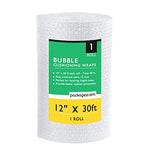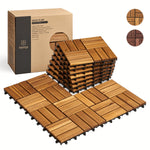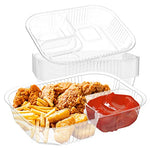You have no items in your shopping cart.
In today's world, where sustainability is gaining increasing importance, the proper management of construction waste has become a pressing concern. Concrete recycling offers a practical and eco-friendly approach to deal with this issue. If you're wondering about concrete recycling near you, this comprehensive article will guide you through the process, advantages, and local facilities available. Let's dive in and explore how concrete recycling can play a crucial role in promoting a greener construction industry.
What is Concrete Recycling?
Concrete recycling is the process of reusing crushed concrete from demolished structures, such as buildings, bridges, or roads. Instead of disposing of concrete waste in landfills, it gets repurposed, reducing the environmental impact associated with traditional disposal methods. Concrete recycling involves crushing the waste material into smaller pieces, which can then be used as an aggregate in new concrete mixtures or as a foundation for various construction projects.
The Benefits of Concrete Recycling Near Me
Concrete recycling offers numerous benefits, both environmental and economic. Let's explore the advantages of opting for concrete recycling near you:
1. Reducing Landfill Waste
By recycling concrete, we can significantly decrease the volume of waste being sent to landfills. This helps conserve valuable landfill space and reduces the pressure on local waste management facilities.
2. Energy and Resource Conservation
Recycling concrete requires less energy compared to producing new concrete from raw materials. Additionally, it conserves natural resources like gravel, sand, and water, which are essential components in concrete production.
3. Lower Carbon Footprint
The recycling process emits fewer greenhouse gases compared to the production of new concrete. By choosing concrete recycling, you contribute to the reduction of carbon emissions and combat climate change.
4. Cost-Effectiveness
Using recycled concrete as an aggregate can lead to cost savings for construction projects. It's often more affordable than purchasing new materials, making it an attractive option for builders and contractors.
5. Promoting Sustainable Construction
Concrete recycling aligns with sustainable construction practices, making it an environmentally responsible choice for architects, engineers, and construction professionals.
Finding Concrete Recycling Facilities Near Me
Looking for concrete recycling facilities in your area? Here are some effective ways to locate them:
1. Online Directories and Databases
Utilize online directories and databases that specialize in recycling facilities. These platforms provide comprehensive lists of local concrete recycling centers and their contact information.
2. Local Government Resources
Contact your local waste management department or municipal authorities. They can provide you with valuable information on authorized recycling facilities near you.
3. Construction Companies and Contractors
Reach out to construction companies and contractors operating in your vicinity. They are likely to be familiar with nearby recycling centers and can guide you in the right direction.
4. Environmental Organizations
Environmental organizations often maintain databases of sustainable practices, including concrete recycling facilities. Check their websites or contact them directly for assistance.
How Does Concrete Recycling Work?
Concrete recycling involves several essential steps to ensure the waste material is appropriately processed. The process typically includes:
1. Concrete Collection and Transportation
The first step involves collecting and transporting the concrete waste to the recycling facility. This can be done through dump trucks or containers designed for construction debris.
2. Concrete Crushing and Screening
At the recycling facility, the concrete is crushed into smaller pieces using specialized equipment. After crushing, the material is screened to remove any debris or contaminants.
3. Quality Control and Testing
To ensure the recycled concrete meets quality standards, it undergoes rigorous testing. This helps determine its suitability for various construction applications.
4. Reusing in Construction Projects
The final step involves utilizing the recycled concrete as an aggregate in new construction projects or for road base and sub-base applications.
Frequently Asked Questions (FAQs)
Q: Is concrete recycling only suitable for large construction companies?
A: Not at all! Concrete recycling is available to everyone, from individual homeowners to large construction firms. Regardless of the project scale, recycling concrete is a sustainable option that benefits the environment and the construction industry as a whole.
Q: How does concrete recycling contribute to LEED certification?
A: Leadership in Energy and Environmental Design (LEED) certification is achieved by implementing sustainable building practices. Concrete recycling earns points in the Materials and Resources category, making it a valuable contribution towards obtaining LEED certification for a construction project.
Q: Can recycled concrete be used for structural applications?
A: Yes, recycled concrete can be used for various structural applications, including foundations, retaining walls, and pavement. It possesses similar strength and durability as traditional concrete, making it a reliable choice for construction.
Q: What are the environmental benefits of concrete recycling?
A: Concrete recycling significantly reduces the consumption of natural resources and decreases the carbon footprint associated with concrete production. By preventing concrete waste from reaching landfills, it also conserves valuable landfill space.
Q: Are there any limitations to using recycled concrete?
A: While recycled concrete is a versatile material, it may not be suitable for projects requiring specific concrete mixes or where extremely high strength is necessary. However, for many applications, recycled concrete is a highly viable and sustainable option.
Q: Can recycled concrete be used in decorative applications?
A: Absolutely! Recycled concrete can be used for various decorative purposes, such as landscaping features, decorative pathways, and even artistic sculptures. Its weathered appearance can add character and charm to outdoor spaces.
Conclusion
Concrete recycling near you provides a practical and environmentally friendly solution to managing construction waste. By reducing landfill waste, conserving resources, and lowering carbon emissions, recycling concrete promotes sustainability in the construction industry. Finding local recycling facilities is easier than ever with online directories, government resources, and support from construction professionals. Embrace concrete recycling and contribute to a greener future for our planet!








